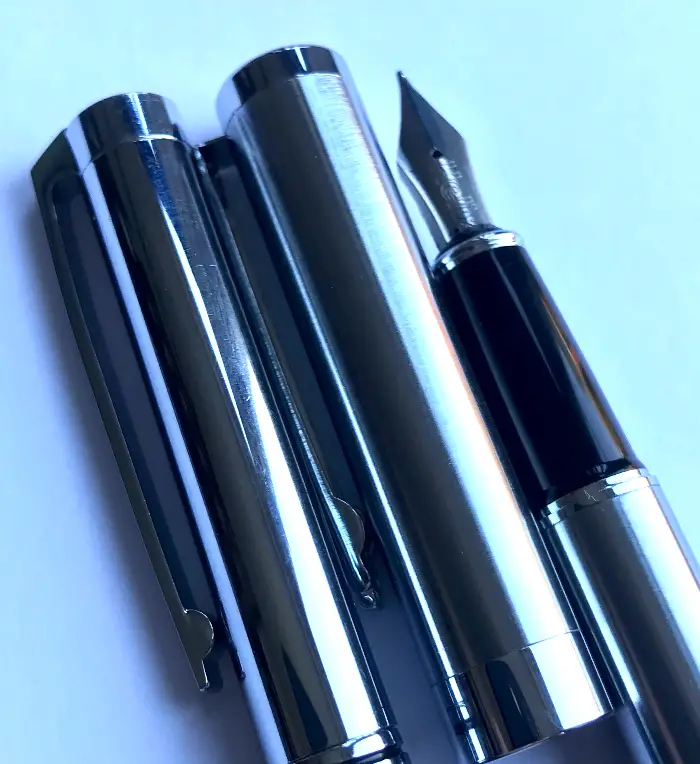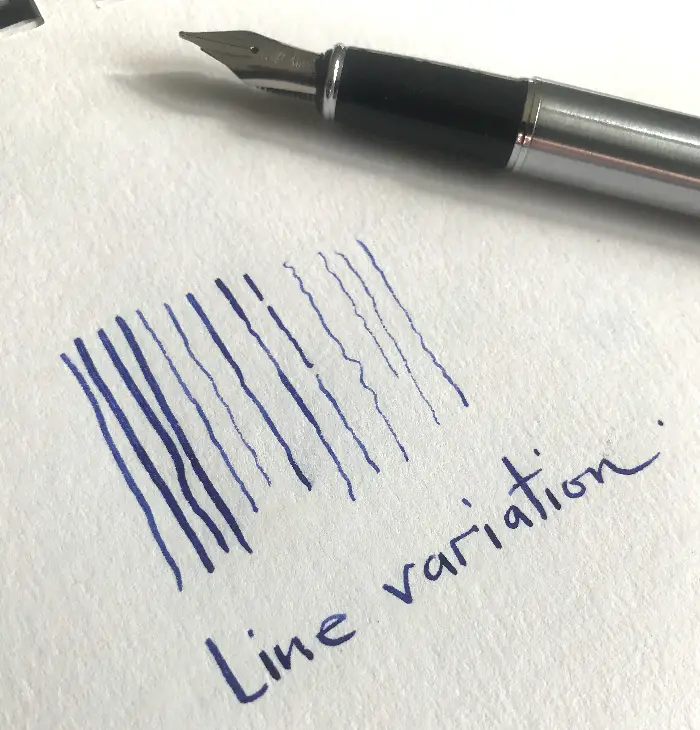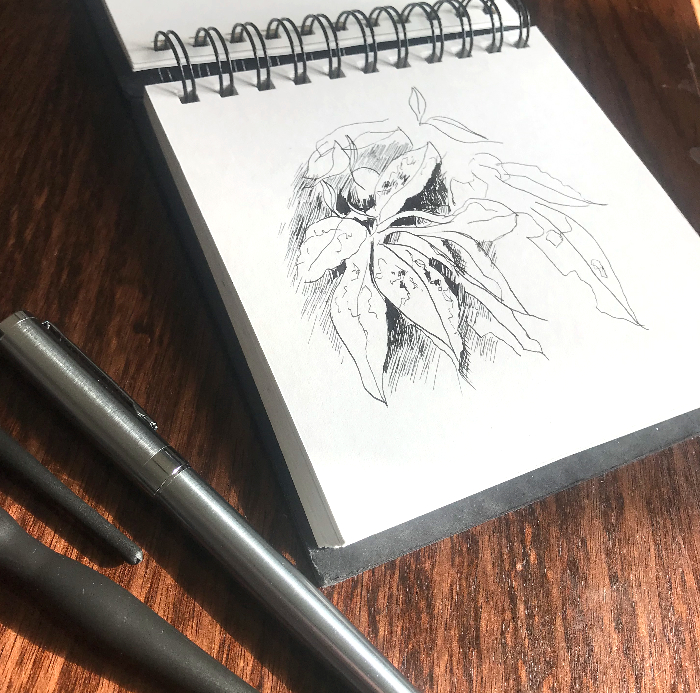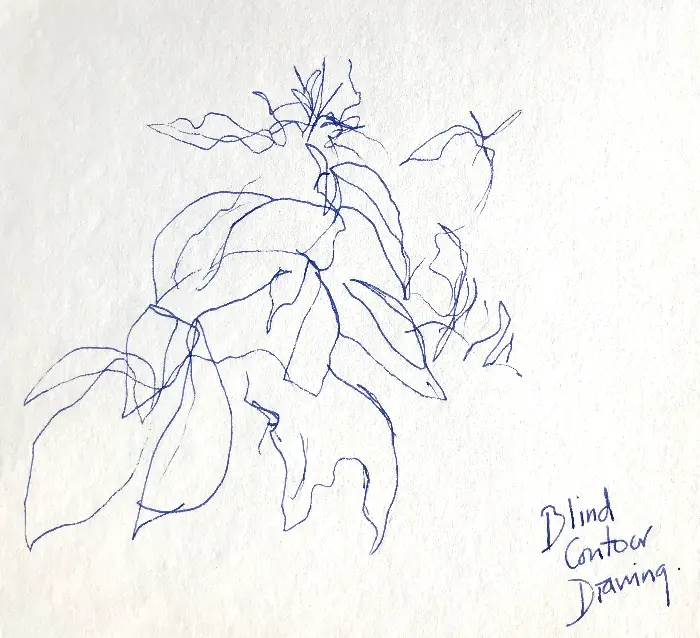If you are an aspiring artist, the materials you need to start your drawing journey are straightforward. You just need a sheet of paper and a device which you’ll use to make a mark on the paper. Simply put, paper and pencils are the basic drawing materials.
As a general rule, Fountain Pens are Suited to Drawing with. Fountain pens are not only fancier than most drawing or sketching tools out there but are equally highly performance-oriented, allowing you to achieve endless possibilities by simply altering how you handle the body and use the nib.
However, thanks to technology's advent, we now have potentially endless types of drawing materials for both beginner and professional artists. And as you grow as an artist and advance your skills, you will soon find that you want to try out a variety of techniques as well as new drawing materials.
Today, most modern drawing materials are relatively easier to use and are also available in a wide range of options. However, essentially, the way we use these advanced tools has remained pretty similar. The significant difference is that today’s drawing materials are highly effective and quite affordable.
Fountain pens have become one of the most popular drawing tools among artists. When you draw with ink, you are practically forced to master the use of lines. The line is often used to develop the illusion of light, texture, and form. Most technical fountains pens for drawing are highly affordable, easy to find, and portable.
Whether you are an established artist looking to explore his\her drawing and take it to a whole new level, or someone who is just starting out using fountain pens to draw, you are in the right place. Today in this post, we will provide you with an extensive article regarding everything you need to know about fountain pen drawing. So, peruse the article and get to know.
So, is a Fountain Pen Suitable for Drawing?
When you think of a fountain pen, sketching and drawing are probably the last things to come into your mind. Lettering, bullet journals, and perhaps calligraphy are the first things you’d think of when it comes to fountain pens and their applications. However, many artists out there use pens as sketching and drawing tools in case you didn't know. The use of fountain pens is no longer limited only to writing. Thanks to their new design and composition, these fantastic tools have become a popular choice among artists of different levels.
Fountain pens are good for drawing simply because they offer a wide range of benefits. Fountain pens are not complex in terms of design but afford artists a great deal of control over the weight of every single line that they draw on the paper. Drawing with a fountain pen offers the following benefits:
* Enhanced Ergonomics: Nearly all artists work for extended hours, and this implies that the materials, as well as the instruments they use, should be very comfortable. With lots of hours dedicated to drawing, artists are bound to experience some form of pain and aches along the way. Whether you believe it or not, drawing is a highly demanding job and can hurt your body when done consistently. Working with a fountain pen to either sketch or line your artwork can potentially help alleviate stress on your body. Fountain pens are available in a variety of sizes, forms, and shapes. It only means that every artist out there can easily find a fountain pen that is perfectly balanced on their hands. Having a fountain pen that perfectly fits into your hand will help lessen fatigue on your hands during those long hours of drawing. What’s more, with a fountain pen, you need to apply somewhat less pressure to draw. This means you’ll have a fairly more relaxed grip on the pen, further reducing the strain on your forearms onto your shoulders.
* Excellent Line Variation: This is arguably the most crucial feature of using fountain pens. You can quickly achieve incredible line variations with fountain pens. You only need to alter the way to hold the pen, the amount of pressure, or you can as well manipulate the pen’s nib for line variations.
* A Wide Range of Inks: Another great attraction with fountain pens is the ink. There are potentially endless options to choose from, with numerous effects. And because there are many inks to work with, artists should know that different inks will react differently simply because they feature different ingredients. Another essential thing to consider when looking for the best ink for your fountain pen is that they are water-based. This implies that they should be handled with care because they can easily mess up your artwork. Of course, there are waterproof options that are perfect for beginners. With waterproof inks, you can be confident that when you line your work and apply the watercolor, your lines will stay intact and preserve the smooth, crisp edges of your artwork. One last thing to note regarding waterproof inks is that some are pigment-based, implying that such inks will likely ruin your fountain pen if not adequately cleaned. If you choose to work with pigment-based ink, you’ll need to clean it more regularly.
* Re-usability: This is another great reason to draw or sketch using a pen. One of the significant disadvantages of using traditional drawing supplies is that you’ll have to purchase a whole lot of drawing materials. While not generally a bad thing, working with many materials can potentially weigh you down because you also need to buy them more regularly, especially if you are a professional artist. Thankfully, fountain pens offer much-needed durability and convenience because you can just purchase what you need to replace a particular ink pen component, including tip markers, pigment liners, or even brush pens. What’s more, you can routinely change inks depending on whatever piece of art you are working on.
So Are Fountain Pens Good for Drawing?
As you may have already seen, ink pens do an incredible job of drawing exact, fluid artwork. They are relatively easier to transport and more lively and spontaneous, especially if you plan to draw or sketch on the go. Drawing with fountain pens also instills confidence because you need to master the techniques to produce top-notch artwork. Also, when you consider the cornucopia of nib sizes and the ink choices fountain pens, allow you to combine, it is pretty easy to see why these special tools have become valuable assets for artists.
Are Fountain Pens for Doodling?
While most people, particularly budding artists, usually view sketching as a mere act of doodling on paper, the truth is that sketching is an integral part of art, and it nearly impossible for any artist to produce a great piece of art without sketching. A sketch is simply a drawing intended to represent the original features of the model or subject with just a few incisive strokes. Whether you are an artist or not, we are all naturally imaginative and love to daydream. There are always many ideas coming into our minds, and sketching is arguably the best creative way you can express your thoughts on the spot!
Even though sketching was initially meant to be done using pencil, the drawing industry's evolution over the years now means there are lots of tools you can use for sketching purposes. Fountain pens have become a popular sketching tool thanks to both pens and inks' unrivaled beauty. Fountain pens add a new dimension to your sketching techniques through the water-to-add-more-tone and wash functionalities, which are not possible for other sketching tools such as pencils and pastels. Below are a few reasons why artists love sketching with fountain pens:
* Permanence! Unlike pastels and pencils that need to be replaced after several applications, fountain pens are relatively durable. After all, they don’t wear out or deteriorate quite quickly. You only need to maintain them accordingly, and you’ll potentially use them for an extended period.
* Numerous possibilities: Inks are available in countless options, and users can use whatever color excites them to draw their sketches. So, if you are a seasonal artist who has had to buy multiple colored pens or pencils to fulfill your sketching needs, switching to fountain pens could be an excellent option for you. Buying numerous pens and pencils is not only relatively costly but also means there are lots of tools taking too much space on your art table! However, fountain pens, you only need to buy a few of them and a set of your inks, and you can quickly achieve any desired color combinations with your sketches. What’s more, you have many options for sketching styles because you can use many inks to manipulate. For instance, water-soluble inks will allow you to change your sketches' tone, and you can effortlessly achieve tone and line using just a single pen. On the other hand, quick-dry pigmented inks allow you to paint your sketch without any ink movement, significantly reducing the chance of unwanted messes.
* Sketching lines created by fountain pens are more beautiful: The dramatic vibrations caused by the bead of ink at the end of every stroke make your sketching lines look livelier. Simply put, fountain pens make your lines more creative, natural, and unique. One of the significant strengths of fountain pens is their ability to create lighter or heavier lines depending on the pressure you apply during the drawing process. This feature allows you to sketch or draw with varied weights quickly, which is vital in any ink drawing. With a fountain at your disposal, you won’t have to switch pens to alter the weight of the lines of your sketch.
* Fountain pens also offer ease of usability due to how the ink flows from the pen to the drawing board.
Practical Fountain Pen Drawing and Sketching Tips:
Just like any other drawing and sketching technique, drawing with fountain pens requires some practice and consistency. However, the most encouraging is that there is no big secret that you don’t know when it comes to drawing with a fountain pen. You only need to get the right pen for the job, know how to use, hold, and manipulate your line weights with your pen. With that in mind, let us briefly discuss some practical and effective tips on how to get the best of your fountain pen:
* Equip yourself with the right tools: To draw in ink, you need nibs, a pen, and ink. When sketching or drawing using a fountain pen, remember that you can make the marks or lines by just dragging or pulling a nib. You don’t need to push the pen, as this will ruin your artwork. Also, it is worth noting that a slight fluctuation in the amount of pressure you apply will lead to a change in your lines' thickness.
* Master the right way to hold your fountain pen: It is essential to mention that simply altering the way you hold your fountain pen adds a bit of extra dimension to your sketches and drawings, making them somewhat more unique. With a ball pen, you are always going to hold it at a more vertical angle. However, with fountain pens, you’ll have to hold them at a roughly 45-degree angle to get better results.
* How to maintain ink flow on a fountain pen: During the drawing process, if you want to keep the ink flowing, you should sketch or draw while holding the fountain pen toward you. By doing this, you’ll be able to maintain the flow of the ink as well as your drawing creativity.
* Wash your fountain more regularly: Did you know that leaving ink in your fountain pen could ruin its overall performance? If you don’t drain ink from your pen, the chances are high that this ink will dry, harden and block your tip’s fountain pen. You can run your fountain pen through some warm water with soap after every single use to keep it clean and in tip-top condition.
* Always sketch first! Working with ink can be a daunting and intimidating task, especially if you start to incorporate ink drawing into your drawing journey. It is worth remembering that just because you are drawing in ink doesn’t necessarily imply that you are bound to use your fountain pen all through! Drawing should always be a stress-free and fun experience. And by doing your sketches in pencil, you can possibly relieve yourself the pressure of working with fountain pens and inks. After that, you can add ink to your sketches.
* Perfect your line variation technique when using a fountain pen: Line variation is significant when drawing with a fountain pen. When you are using charcoal or pencil to draw, you can easily combine them to create different tones. Unfortunately, with fountain pens, you don’t have this kind of flexibility, so you have to be creative to create the appearance of shadows. You can achieve this by varying the weight of the hatch marks to add some exciting textures. You can also use somewhat heavier lines in the foreground while, on the other hand, use lighter lines on your background subjects.
* Combine fountain pen drawings with watercolor: All great artists agree that ink and watercolor were meant to complement each other. But how should you combine these two? You can combine watercolor and ink in a variety of ways. However, you’ll only need to ensure that the ink should dry out completely when doing a watercolor wash over ink before you proceed. What’s more, if you incorporate watercolor into your fountain pen drawing, you will have to equip yourself with a relatively heavier paper to help prevent water from destroying the paper.
So, Which are the Best Fountain Pens for Sketching?
Today, there are potentially endless types of fountain pens for drawing, and this simply implies that the prospect of finding the best pen can sometimes prove to be a daunting task. Thankfully, there are a few factors that you need to take into account before choosing your preferred fountain pen, including:
Find the Right Nib Size:
The nib is simply the tip of the fountain pen that makes contact with the paper. Previously, fountain nibs were made from gold material because of gold’s resistance to corrosion and increased flexibility. However, today’s nibs feature either gold alloys or stainless steel materials thanks to their durability and strength.
Nibs are available in a variety of shapes and sizes. The three basic nib tip shapes are stub, round, and italic. Whereas italic and stub nibs are generally used in calligraphy, round tips are arguably the most common shape and offer a relatively more uniform-looking line on the paper.
Choosing a nib size can be an equally difficult task, particularly if you have no point of reference to base your decision. To be on the safest size, you must have several nib sizes as an artist, including extra-fine, fine, medium, and broad-size nibs.
Finally, it is worth noting that other factors impact the performance of your pen’s nib, such as the amount of pressure you put on the fountain pen, the type of paper used, the ink used, and the level of experience of the artist. A great place to start when looking for a perfect nib size would Goulet Pens websitehttps://www.gouletpens.com/pages/nib-nook. They have a section known as Nib Nook, where they have written words using a variety of pen nibs, using the same type of paper and ink.
Nib Flexibility:
This is another important feature you would want to take into account. Simply put, the more flexible the nib is, the more accessible users can vary line with by applying varying degrees of pressure. It has been proven that nibs made from gold are the most flexible but tend to be somewhat more expensive.
The Design of the Pen:
This mainly relates to how comfortable the fountain pen is in your hands. As you may have already guessed, it can be pretty difficult to gauge a particular offers' level of comfort before using it. So, you’ll have to try a couple of pens before you settle on a particular design. The rule of thumb is that you should find a fountain pen that offers the ergonomic support needed to hold a pen for an extended period.
Of course, the pen's design should also take into account the thickness, length, and weight of the pen. In this regard, if you have bigger hands, you can consider a relatively thicker fountain pen. In terms of length, just think about what suits you best.
Fountain Pen Price:
Fountain pens vary significantly in terms of price. Depending on your budget and your level of experience, you can always find the type of fountain pen that suits your preference and needs. It is important to note that you don’t have to spend lots of cash to get the best fountain pen. You can easily find a cheaper pen that offers superior performance. Unless you have navigated the fountain pen industry for a while, it is better to go with a cheaper one. After that, you can then up your game by using more expensive pens.
So, Which is the Best Pen For Drawing?
Pelikan Classic Fountain M205 Pen:
Pelikan is arguably the most reputable fountain pen manufacturer, producing top-notch pens that guarantee top performances to their users for many this is a go-to pen for drawing. This particular is its typical product, boasting numerous unique features that every accomplished artist would want from a great fountain pen.
The Classic M205 is suitable for an artist with smaller hands. It is just bulky and durable enough to withstand physical abuse and boasts a sleek and lightweight design to support gentle drawing styles, mainly sketching. However, if you find that this particular model is still significant for your handling, you can choose either the M400 or M600 series, which are relatively smaller.
This fountain pen’s nib is made from stainless steel, and this means that you can easily replace the nib with a gold nib, especially if you don’t want to lose the pen. It features a piston filling system and therefore uses a bottled ink. It also has a beautiful design, thanks to its blue-green resin and silver construction. Though it is reasonably high priced, the Pelikan is a fantastic drawing tool worth your attention. Click here to view prices on Amazon.
Platinum DP-800S Carbon Extra Fine Fountain Pen:
Here is another amazing pen any artist would want to have at his disposal. It is not only available at a somewhat lower price, but the DP-800S brings onboard numerous valuable features that would take your sketching to a whole new level.
It has an ultra-fine nib that users can easily manipulate to create either thin or thick lines. And your fantastic linework won’t run with water either because this fountain from Platinum uses carbon ink. However, it is essential to mention that it is best suited for smooth papers. Click here to read the latest reviews and prices on Amazon
Pilot Collection Metropolitan Fountain Pen:
If you have never used a fountain before and are looking for the perfect tool to help you introduce yourself to the world of fountain pen drawing, look no further than the Pilot fountain pen. It is arguably the best fountain pen for amateur artists out there. In terms of design, it seamlessly combines contemporary elegance with modern design without compromising performance. It allows you to achieve the modern drawing experiences that reflect some of the best traditional iconic styles.
It comes equipped with an ink-controlled system, so users don’t have to experts to create gorgeous, smooth, perfect lines with its nib. Another essential point to note is that it comes with a starter cartridge; you don’t need to purchase some ink right away. It is available in black, champagne, or silver. Click here to see this product on Amazon.
Black LAMY 2000 Fountain Pen:
If you are an established artist who is willing to break the bank for a high-end fountain pen, then the Black LAMY should be your ultimate option. It has a smooth and sleek body, which is both classic and minimalist.
The design is comparatively lightweight yet robust, ensuring the pen warms up comfortably through your hands as you explore your creative side. It features a gold nib that is 14 karats and coated in Platinum. And because gold is relatively more pliable, users will only need to apply the lightest pressure to draw or sketch lines. Click here to view the product on Amazon.
Jotter Parker Fountain Pen with Metal Body:
This is one of the most popular fountain pens out there. It is a sturdy and beautifully crafted fountain pen that will boost your art room's overall aesthetics and boost your drawing skills.
It features a stainless steel barrel, a feather-shaped medium nib, and Parker’s legendary arrowhead clip. Though reasonably priced, Jotter Parker is an amazing fountain pen worth your hard-earned dollars. It comes packaged in a unique gift box, together with a cartridge of blue water-based ink. It is available in a broad range of barrel colors, from blue, black to red. Click here to view the latest information on Amazon.
Is a Fountain Pen Worth it?
As an artist, you have every reason to incorporate fountain pens into your creative prowess. Simply put, they aren’t just about being fancy. Instead, they are designed to offer quality, comfort, visual appeal, and practicality that other mediums lack.







